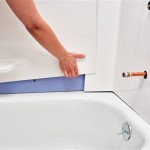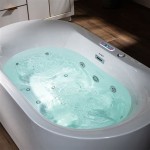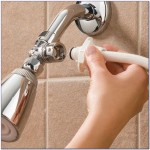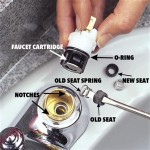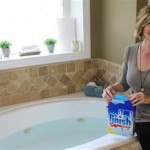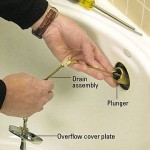Bathtub Water Storage
Storing water in a bathtub is a readily available method for emergency preparedness. A standard bathtub can hold between 30 and 50 gallons of water, providing a crucial resource for sanitation, hygiene, and even drinking if properly treated. This practice offers a practical solution for short-term disruptions in water supply due to natural disasters, infrastructure failures, or other unforeseen circumstances.
The process of storing bathtub water is straightforward. Before filling, the tub should be thoroughly cleaned with a disinfectant cleaner. Any residues or soaps should be rinsed away completely. Then, the tub should be filled with cold water. Hot water can leach chemicals from the pipes and is generally not recommended for long-term storage.
Once filled, the water should be protected from contaminants. A clean shower curtain or plastic sheeting can be placed over the tub, secured with weights or tape around the edges. This cover helps prevent dust, debris, and insects from entering the water. Keeping the bathroom door closed will also minimize the risk of contamination.
Several considerations are crucial for safe and effective bathtub water storage. The material of the bathtub itself plays a role. Older tubs made of porcelain or enamel are generally safe. However, tubs with cracks or chips could leak or harbor bacteria. Plastic or fiberglass tubs are also suitable, but inspect them for any damage before filling.
Water purification is essential if the stored water is intended for drinking. Boiling is the most reliable method for eliminating harmful bacteria and viruses. Water should be brought to a rolling boil for at least one minute. Other purification methods include using water purification tablets or a water filter specifically designed for emergency use. Always follow the manufacturer's instructions for these products.
The stored water should be used conservatively. Prioritize essential needs like drinking, cooking, and basic hygiene. For non-potable uses like flushing toilets, consider using greywater from other sources, such as dishwashing or laundry, before tapping into the bathtub reserve.
Regular maintenance of the stored water is important. If the water has been stored for an extended period, consider refreshing it. Drain a portion of the water and refill with fresh, cold water. This helps maintain water quality and minimizes the risk of stagnation.
Beyond individual households, bathtub water storage can also play a role in community-level emergency preparedness. Public service announcements and community education programs can inform residents about this simple yet effective water storage method. This can be especially valuable in areas prone to natural disasters where large-scale water disruptions are a possibility.
While bathtub water storage is a valuable resource, it's important to recognize its limitations. The amount of water stored in a standard bathtub will typically last only a few days for a single household. It should be considered a temporary solution while more sustainable water sources are restored or accessed. Therefore, incorporating bathtub water storage into a broader emergency preparedness plan, including other water storage methods and emergency supplies, is crucial.
Planning for various scenarios is also important. Consider the specific needs of household members, including infants, pets, and individuals with special medical requirements. Factor these needs into the overall water storage plan. For example, pets require fresh, clean water, and individuals with certain medical conditions might need access to purified water for medications.
Pre-planning is key to maximizing the effectiveness of bathtub water storage. Having the necessary supplies on hand before an emergency simplifies the process. Gather items like a heavy-duty plastic sheet or shower curtain, tape, disinfectant cleaner, water purification tablets or a filter, and containers for transporting and dispensing water. Storing these items in a readily accessible location ensures quick and efficient implementation of the bathtub water storage plan.
Educating household members about the plan is also crucial. Everyone should know the procedures for filling, covering, and using the stored water. This shared understanding can help prevent confusion and ensure the water is used responsibly during an emergency. Regularly reviewing and practicing the plan can further enhance preparedness.
Finally, staying informed about potential emergencies and water advisories is essential. Local authorities often issue warnings and guidance regarding water safety and conservation. Pay attention to these alerts and integrate the information into the household's emergency preparedness plan. This proactive approach allows for timely implementation of water storage strategies, including utilizing the bathtub as a temporary water reservoir.

Order Waterbob

This Waterbob Lets You 100 Gallons Of Emergency Drinking Water In Your Bathtub

Waterbob Review Best Bathtub Water Bladder In 2024

Waterbob Bathtub Emergency Drinking Water Storage City Mill

Waterbob Bathtub Water Storage Informed Prepper

Waterbob Emergency Drinking Water Storage Keeps Fresh And Clean

Waterbob Water Storage Solution Rapid Survival

Using Your Bathtub For Emergency Water Storage

Waterbob Emergency Water Storage Fda Approved Canadian Preparedness

My Experience Of Using A Waterbob During Personal Disaster The Prepared
Related Posts

